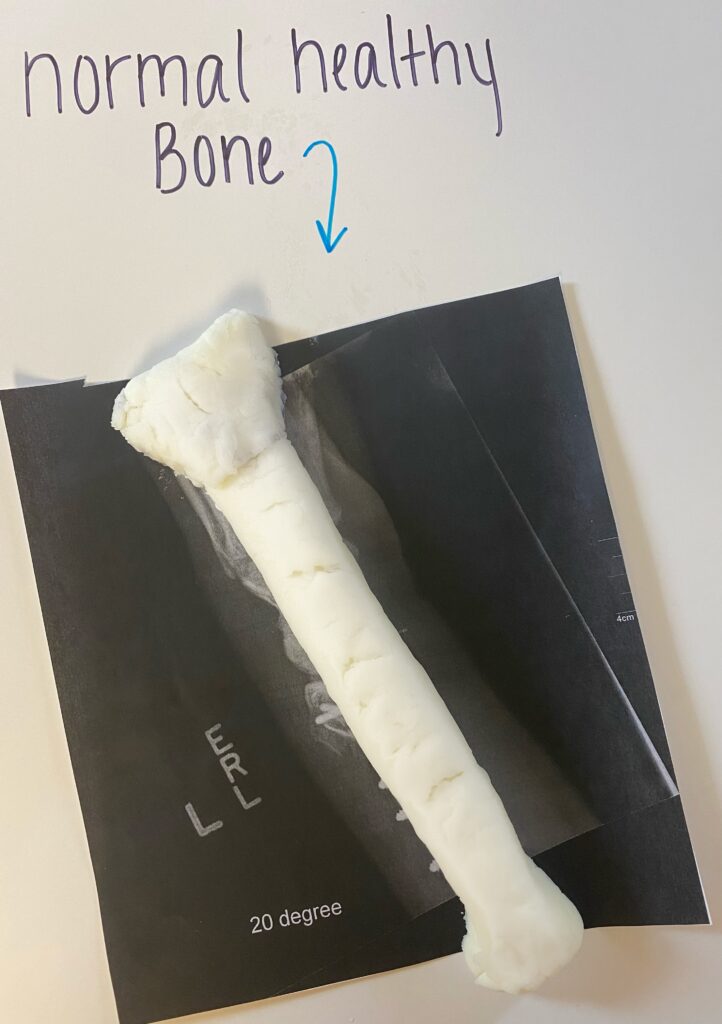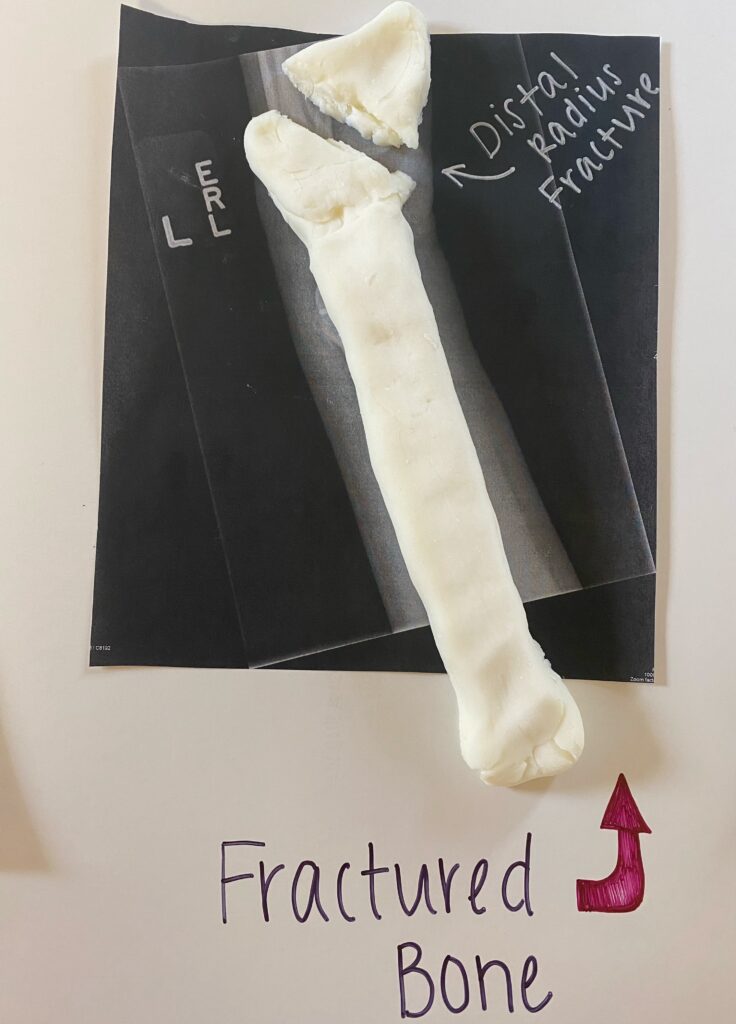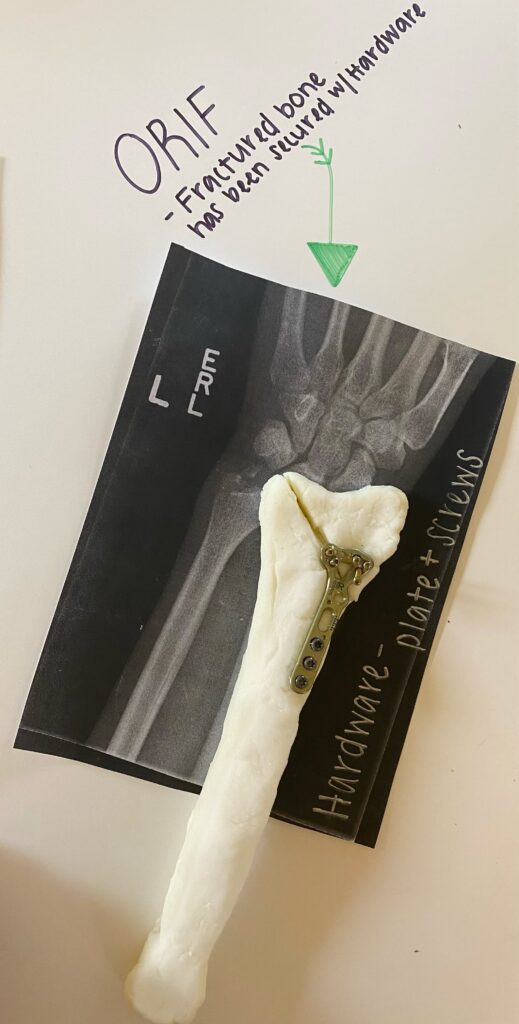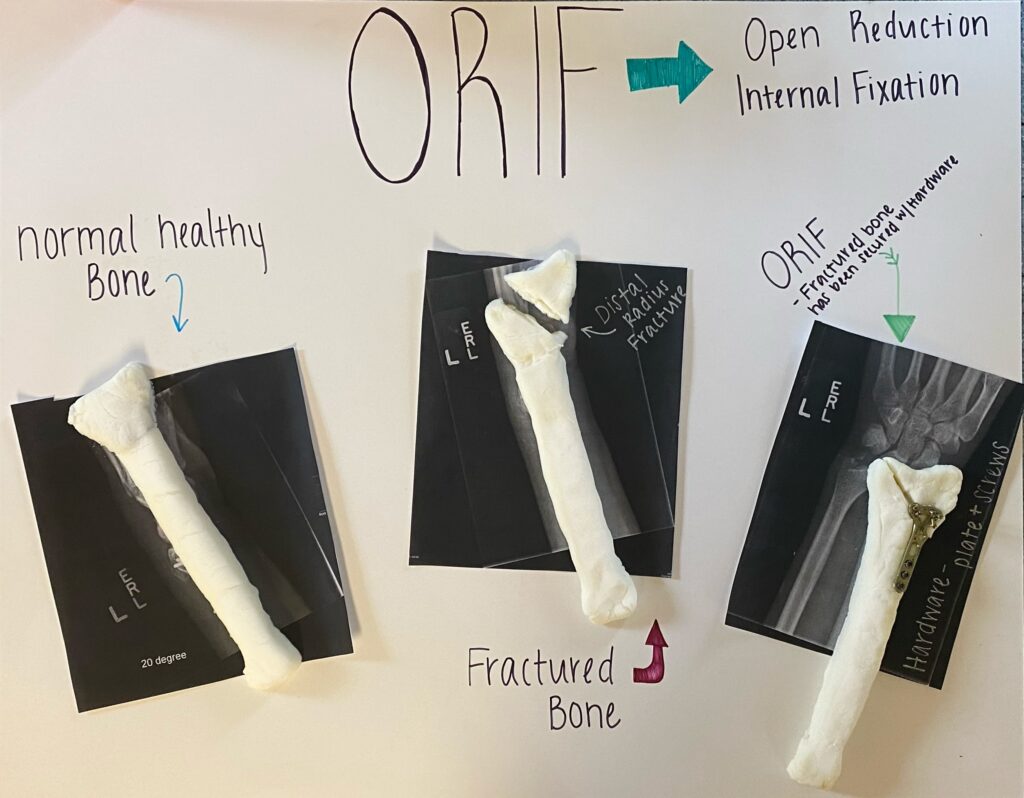In my project I discuss how in severe bone fractures an ORIF is needed. An ORIF is essential for optimal bone repair to occur. It is a surgical process in which an orthopedic surgeon places hardware such as screws, rods, wires, plates and other items into the bone to allow for optimal healing. The addition of the hardware allows for minimal space in-between the fractured bone, allows for little movement of the bones and compression of bone tissue which assists in the facilitation of bone healing. Bone fractures and the open reduction internal fixation process will be the focus of my study. I made homemade clay in order to mold and reflect the bone. My example reflects a distal radius fracture at a posterior view. In my models you will find a normal healthy bone, a fractured bone, and bone that has undergone an ORIF. You can see how the screws and plates are strategically placed in order for alignment and ideal healing. The plate is placed over the shaft, and the top of plate extends towards the styloid process of the radius in order to cover the fracture. The screws are then placed in the plate into the lateral part of the shaft and at the top of plate. Some of the screws once inserted are crossed in order to hold all parts of the bone together. Over time, as bone repair takes place the fracture will dissipate, and the bone will mend itself back to health.





Hello Alexys, the photos are great well labelled, and I like how you showed the difference between a normal healthy bone and a fractured bone, also a bone with hardware plates and screws, for example.
However, your essay was strong and to the point. You showed citations proving you have used outside sources. It seem like “Betts” helped explain quite a few things in your research, such as the classification of each fracture. It is imperative to know the human body and the function of the body because we all have bones, organs and etc. the point I am trying to make is no matter your major learning, this is important. The articles you used are great.